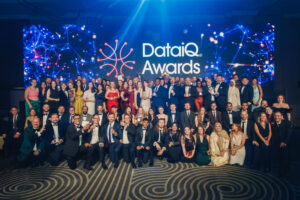As Dave Callow, CIO at NHS Professionals, puts it: “Everyone’s had their fill of definitions. Now it’s about architecture, governance, and return.”
Paul Alexander, CEO of Beyond Putting Data to Work, agrees: “The moment for theory has passed. We’re seeing clients re-architect their businesses around agentic systems—and the gains are material. If you’re still waiting for the technology to mature, you’re already behind.”
From Concept to Commercial Impact
Agentic AI may still be an emerging category, but its core traits—autonomy, goal-directed behaviour, and adaptive planning—are already showing up in production systems. Across industries, companies are building toward agentic capability even if they aren’t calling it that yet.
At PwC, internal tools trained on procedural documentation are now drafting first-pass regulatory reports across multiple jurisdictions. While still supervised by experts, these systems significantly reduce the time spent on manual compilation. What once took 40 hours now takes fewer than six. As Matt Wood, PwC’s Global and US Commercial Technology and Innovation Officer, explained, they’re striving to move agents from “ships that pass in the night” to “an armada that’s working together.”
Fidelity Investments is also advancing quickly. Its AI assistants support financial advisors by dynamically adjusting portfolio recommendations based on market changes and client preferences—significantly reducing prep time and enhancing service quality.
As Priyanshu Bakshi, a Portfolio Manager at Fidelity, explains: “While generative AI depends on creating content and human prompts, agentic AI extends that concept and is designed to act autonomously to make decisions and take action. We are still in the early innings of seeing the impact of this innovative technology, which I believe will take AI to another level.”
In logistics, Maersk is deploying adaptive routing systems that respond to real-time variables like port congestion, weather, and fuel prices. While humans still oversee the broader strategy, day-to-day decisions—once routed through operations teams—are now handled by AI agents that adjust shipping paths autonomously within clearly defined parameters.
Healthcare is also testing agentic orchestration. At Roche, lab schedulers are being piloted to coordinate diagnostic workflows across multiple hospitals. These early-stage systems adjust for equipment availability, maintenance windows, and patient demand in real time. While not fully autonomous, they mark a step-change in how operational decisions are delegated to intelligent systems.
And in retail, H&M’s virtual shopping assistant exemplifies agentic traits in a customer-facing context. The assistant not only resolves common queries across channels, but also adapts to customer behaviour, navigates inventory systems, and escalates edge cases appropriately.
“Over 85% of customer interactions are resolved without human intervention. We are deploying AI to strengthen our operations and improve customers’ experience when shopping across physical and digital channels,” said Ellen Svanstrom, Chief Digital Information Officer at H&M.
“These aren’t proofs of concept,” says Alexander. “They’re production systems delivering measurable outcomes. That’s the new baseline for CDOs: not what’s possible, but what’s working.”
The Architectural Question
If the value is clear, the path to get there is less obvious. CDOs must choose between super-platforms like Microsoft Copilot, wrappers that connect agents to legacy systems, or bespoke builds tailored to sector-specific challenges.
Each option has strengths and risks. Super-platforms deliver speed but constrain flexibility. Wrappers extend life into older infrastructure but require orchestration. Custom builds create unique differentiation at higher complexity.
For Alexander, the orchestration layer is non-negotiable: “You can’t just drop an agent into your stack and hope for the best. Governance, permissions, auditability—this is what makes autonomy safe for enterprise deployment. Without that, you’re gambling, not innovating.”
That strategic weight is something leaders are acutely aware of. As Callow explains: “The decision felt less like choosing a tool and more like setting a direction of travel for the next decade. Whatever path you take, you’re locking in dependencies, skills, and vendor relationships that will shape your data estate for years. That weight is what makes the choice so hard.”
Financing the Leap
Another common stumbling block is financing. Too often, agentic pilots are ring-fenced as innovation projects, with no accountability for ROI.
“That’s a trap,” says Alexander. “If you want board-level buy-in, tie every pilot to a clear business outcome—hours saved, costs cut, revenue gained. Otherwise, you’re just tinkering.”
The phased model is clear:
- Start small, in low-risk but high-value areas.
- Prove ROI within months, not years.
- Scale modularly across functions.
- Reframe investment from experimentation to infrastructure.
When data and AI leaders can show the CFO that an agent pays for itself inside a single financial quarter, the funding conversation changes completely. Yet, CDOs know the financial discussion rarely ends there. Many are grappling with procurement cycles not designed for adaptive technology. Subscription models clash with capital expenditure frameworks; vendor lock-in creates hidden liabilities. The pragmatic solution, Alexander suggests, is to treat early-stage agent projects as capital-light—minimal investment, maximum proof. Then scale up only when you can evidence operational payback.
Culture Eats Architecture
Technology alone will not deliver success. Culture is the bigger hurdle.
As William Beresford, Chief Strategy Officer at Beyond, reflects: “What surprised us most when working with numerous organisations wasn’t the technical build, it was the shift in mindset needed from different teams. People had to stop seeing the agent as a black box and start treating it as a colleague whose decisions they could interrogate and improve. Implementing that cultural shift was harder than the coding.”
“The biggest mistake is expecting perfection on day one,” Alexander argues. “Agents need room to learn. Humans need visibility into how they’re learning. Without that, trust breaks down fast.”
Transparency dashboards, human-in-the-loop systems, and clear escalation paths are critical. Equally, the talent profile must evolve.
“The most valuable employees won’t be the ones building new models,” Alexander says. “They’ll be the ones orchestrating agents, steering workflows, and ensuring compliance. That’s where CDOs should invest in skills right now.”
What You Don’t Know (Yet)
For many CDOs, the surprise is not what agentic AI does but how fast adoption is moving.
- A PwC survey found 79% of enterprises are already deploying agents, and 88% plan to increase budgets in the next year.
- Nearly 43% of organisations now spend more than half of their AI budget on agentic systems, with 62% expecting ROI above 100%.
- The market is projected to explode from $4.3 billion in 2025 to over $103 billion by 2034—a compound annual growth rate of 42%.
But there’s a critical warning buried in the research. A recent academic review of 84 agentic systems showed evaluation practices skew heavily toward technical performance—83% of studies focus on model metrics—while only 30% look at human factors, 53% at safety, and 30% at economic impact. Many systems that shine in the lab fail in the real world.
When agents navigate both digital and physical environments, tasks aren’t just being automated; decision-making is being redefined. The challenge for CDOs is not whether agentic AI works, but whether your organisation can evaluate it holistically—on ROI, resilience, and trust.
Looking Ahead: Beyond the Obvious
What may still surprise CDOs is how quickly agentic AI is crossing from the digital to the physical world. In Japan, warehouse robots are already using agentic architectures to coordinate without central instruction, reducing collisions and optimising routes in real time. In healthcare, pilot projects show agents autonomously scheduling equipment use and even reordering supplies.
The frontier is not just agents serving humans, but agents negotiating with agents. Supply chain contracts, financial trades, even energy grid load balancing are all being tested with agent-to-agent transactions—raising questions of governance that make today’s challenges look simple by comparison.
From Data-Driven to Agent-Powered
So, what is the agenda for Chief Data Officers?
First, move beyond dashboards. Frame your data strategy around agents as active participants, not passive repositories.
Second, embed safety and governance from day one. Agents without oversight are accidents waiting to happen.
Third, demand ROI. Every pilot should produce measurable outcomes, or it doesn’t scale.
Finally, build the talent and culture to support orchestration. Agents are only as effective as the humans who guide and evaluate them.
Alexander leaves the final word: “The companies that act now aren’t just buying efficiency—they’re buying competitive advantage. Agentic AI is no longer a lab tool; it’s already shaping markets. The only question is how fast you make it real.”
About Beyond
Beyond: Putting Data to Work is a data, AI and analytics specialist that helps organisations unlock the true value of their data. Our expert team transforms complex information into actionable insight—driving smarter decisions, better customer experiences, and measurable growth.
Our approach is simple: we put data to work. From optimising operations to shaping strategy, we partner with businesses to turn data and AI into a competitive advantage.





